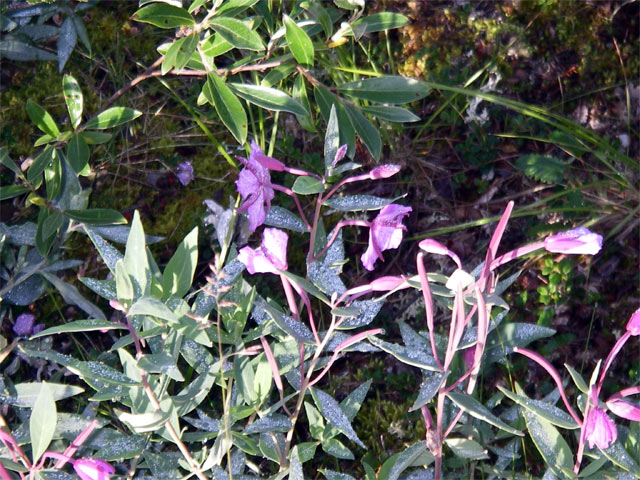( Log In ) Log In is for TREC Teachers & Researchers only
  |
| Charla_Jordan |
 Aug 11 2006, 09:49 PM Aug 11 2006, 09:49 PM
Post
#1
|
 Advanced Member    Group: TREC Team Posts: 36 Joined: 12-April 06 Member No.: 28 |
July 29, 2006 Plants of the Arctic
Temperature 70, Sunny Day 6 of the Pluck, Still Plucking Since we have begun the pluck I have learned so much about the arctic plants. They are very unique and beautiful, so I thought that today in my journal entry I would tell about the plants. The farther north you go in Alaska, the plants are all low-growing plants—shrubs, herbs, mosses, and lichens. Also, the growing season becomes progressively shorter. Because of the harsh environment, plants crowd together to protect each other from the wind. Working in the field and lab at Toolik, there are some common plants that we saw often: (My jump-drive is in the picture to show the small scale. The jump-drive is about 3 inches long) Fireweed, with its tall spikes of vivid purple-pink flowers, is a common “weed” over much of the northern hemisphere; it quickly colonizes disturbed land, especially old burns—hence its name.  Fireweed, Epilobium angustifolium Crowberry is a low, matted evergreen shrub, whose tiny glossy leaves make it look like heather. The plants become more noticeable when the shiny, jet-black berries ripen. The berries are juicy and edible, though rather tasteless. The whitish plant touching the right of the jump-drive and in the right bottom of the picture is called Snow Lichen. Also, the greenish-gray round leaves in the center of the picture are the Arctic Blueberry. They are low, ground-hugging shrubs that often carpet the ground.  Crowberry, Empetrum nigrum Snow Lichen, Cetraria nivalis Arctic Blueberry, Vaccinium uliginosum At least twenty different species of willows live in the Arctic; they are identifiable sometimes only to experts. The willows around Toolik are very low shrubs the creep over dry, stony ground. Compare that to the willow in East Texas that are tall trees.  Arctic Willow, S. arctica (I think) Dwarf Birch has small, leathery, round to slightly egg-shaped leaves, with rounded teeth on sides of the leaves. The twigs are rough with “warts” (what looks like sugar crystals to me). At Toolik, the Dwarf Birch only grows from ankle to mid-calf height.  Dwarf Birch, Betula glandulosa Lingonberry is another ground-hugging shrub that carpets the ground. Lingonberry has shiny, scarlet berries and shiny, evergreen leaves. Look for the shiny, dark green, egg-shaped leaves. Also, Reindeer Lichen is on the left side of the picture and is brown. Reindeer Lichen is probably the best known of the arctic lichens, because of its importance in the diet of caribou and it looks like Reindeer antlers!  Lingonberry, Vaccinium vitis-idaea Reindeer Lichen, Cladina raniferina Identification of the great majority of grasses and sedges in the Arctic is not practicable in the field except by people already familiar with them, except for cottongrass. They are instantly recognizable: their fluffy heads contribute greatly to the beauty of the tundra. Cottongrass is actually a sedge.  Cottongrass, Cyperaceae This is only a few of the beautiful species that are on the tundra. |
  |
2 User(s) are reading this topic (2 Guests and 0 Anonymous Users)
0 Members:

|
NSF Acknowledgment & Disclaimer | Time is now: 20th November 2024 - 03:34 PM |
Invision Power Board
v2.1.7 © 2024 IPS, Inc.








